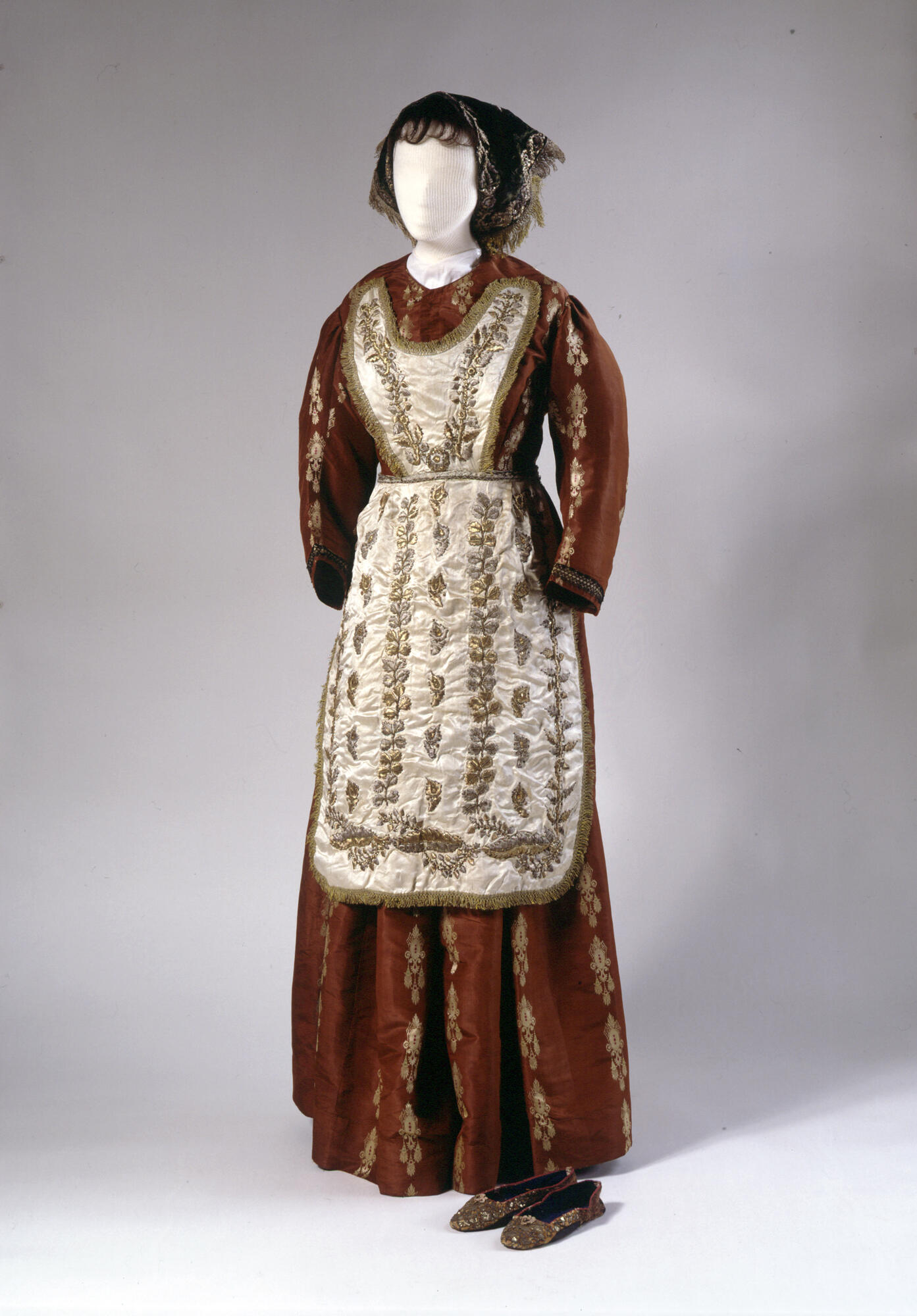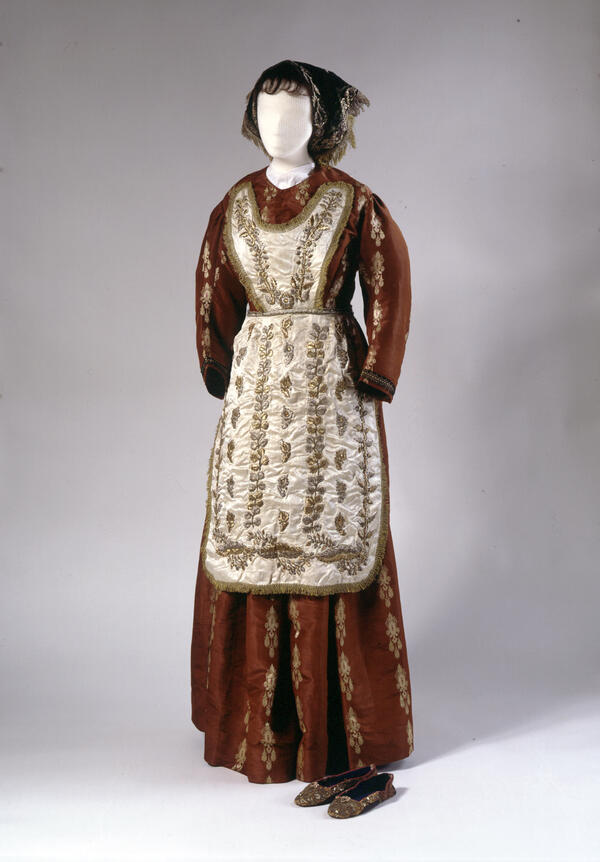The clothing of a married Jewish woman included a blouse, a skirt, a bib, an apron, and a headdress, and less often a vest. As Jews settled in Central and Eastern Europe, they borrowed fashion styles from the local peoples, but those items remained obligatory elements of traditional costume until the beginning of the 20th century.
The skirts were cut loose, and the jackets were open with invisible fastening. Clothes were made of silk, which was considered a special material, endowed with power against evil spirits. The fabric was skillfully hand embroidered with floral patterns.
Another mystical item of clothing capable of protecting against the evil eye was a bib — brustichl or brustukh. It was worn over a blouse or vest, brightly embroidered, and thoroughly ironed and starched for festive occasions. Women’s shoes were similar to modern pumps and ballerines, they were also decorated with embroidery.
According to the law, a married woman had to have her head covered. After the wedding ceremony and the traditional shaving of her hair, she wore a wig and a shawl on top. The everyday headdress was a thin cotton headscarf schleier with lace, covered with a net or veil. The ends of the schleier went down on the back, and on top of it the head was decorated with colored ribbons and special pads with pearls and flowers. Elderly women would roll up a headscarf in the form of a turban, it was called a “knoop”.
On holidays, women wore a star scarf, or sterntichl ornament. It resembled a crown or wreath and was decorated with jewels and pearls. In addition, metal pendants were attached to it on the forehead, temples, and next to the ears. Lithuanian Jewish women called this adornment “binde”. By the end of the 19th century, their shape was changed to resemble a pearl tiara.
The opulence and pretentiousness of traditional female attire had social reasons. Jews were restricted in their rights in foreign territories, their position was precarious. They could not own real estate, so they literally carried their capital on their backs. A wife’s jewelry was a measure of her husband’s solvency and the family’s wealth.
The skirts were cut loose, and the jackets were open with invisible fastening. Clothes were made of silk, which was considered a special material, endowed with power against evil spirits. The fabric was skillfully hand embroidered with floral patterns.
Another mystical item of clothing capable of protecting against the evil eye was a bib — brustichl or brustukh. It was worn over a blouse or vest, brightly embroidered, and thoroughly ironed and starched for festive occasions. Women’s shoes were similar to modern pumps and ballerines, they were also decorated with embroidery.
According to the law, a married woman had to have her head covered. After the wedding ceremony and the traditional shaving of her hair, she wore a wig and a shawl on top. The everyday headdress was a thin cotton headscarf schleier with lace, covered with a net or veil. The ends of the schleier went down on the back, and on top of it the head was decorated with colored ribbons and special pads with pearls and flowers. Elderly women would roll up a headscarf in the form of a turban, it was called a “knoop”.
On holidays, women wore a star scarf, or sterntichl ornament. It resembled a crown or wreath and was decorated with jewels and pearls. In addition, metal pendants were attached to it on the forehead, temples, and next to the ears. Lithuanian Jewish women called this adornment “binde”. By the end of the 19th century, their shape was changed to resemble a pearl tiara.
The opulence and pretentiousness of traditional female attire had social reasons. Jews were restricted in their rights in foreign territories, their position was precarious. They could not own real estate, so they literally carried their capital on their backs. A wife’s jewelry was a measure of her husband’s solvency and the family’s wealth.



